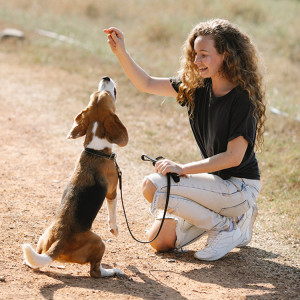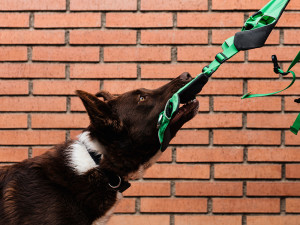New Legislation Proposes the Ban of Shock Collars in New York
New York Rep. Linda Rosenthal’s new bill puts pups first.
This week, New York State Representative Linda Rosenthal introduced legislation that would ban the sale of shock collars for dogs in New York. If the billopens in new tab is passed, it would mean a $500 fine for anyone caught selling the controversial punishment device which, as Rosenthal says, “can result in burns to the skin and cause stress and anxiety to dogs, resulting in aggression or other behaviors.”
As Rosenthal notes in her memorandumopens in new tab: “Many countries, including Denmark, Norway, Sweden, Switzerland, and Germany have already implemented bans on shock collars.” This bill would make New York the first state in the country to adopt a similar ban. Between this proposal and the recent ban of puppy millsopens in new tab, New Yorkers might be witnessing a sea change in the legal protection of animal rights.
Trick question: All dogs are perfect! But find out which type is the best fit for you.
Why Ban Shock Collars?
Most dog trainers, including each one Kinship works with, prefer positive reinforcement methods. This means they use rewards to encourage dogs to repeat good behaviors — as opposed to positive-punishment training, which inflicts an unpleasant stimulus (such as a shock or a yell) in order to discourage bad behaviors. As Melissa Dallier, a certified professional dog trainer, wrote for, “Science and experience over the years have made it clear that ‘positive reinforcement’ or “reward-based” training is the most effective and humane way to train dogs.”
Generally, punishment training comes with more risks. According to Dallier, shock collars and other negative tools, such as electric fences and prong collars, “often only suppress undesirable behaviors and have been proven to cause additional behavior problems like fearfulness, aggression, and learned helplessness.”
How much do you spend on your pet per year?
Most commonly, dogs can be taught to fear — rather than respect — their trainer or anything associated with training. What happens if you use a shock collar on a loud dog while they’re on a walk? Instead of a quiet dog, you might end up with a pup who’s terrified of their leash and refuses to go outside with you. Aggressive behavior is another logical response to pain. Instead of seeing you as a teacher, the dog in question will learn to see you as an enemy.
Dallier’s final example, “learned helplessness,” occurs when dogs experience so much punishment that they don’t feel that they have control over their outcomes and behaviors, so they shut down completely.
Dr. Marty Becker, the founder of Fear Free Pets, a “science-based organization” based on over 300 studies, agrees with Dallier. He lists the use of shock collars as a red flag to look out for in trainers, citing Dr. Karen Overall’sopens in new tab assertion that “Fear is the worst thing a social species can experience, and it causes permanent damage to the brain.”
Positive-reinforcement trainers are much more in favor of reward over punishment of any kind. As Dr. Becker told Kinship, “Part of our slogan is to put the treat into treatment. You show [a pet] what you want them to do and then reward them when they do it, or get close to doing it. Fear Free always works to reduce or remove triggers that cause fear, anxiety, and stress.”
In other words, it takes time for a pup to truly understand what behaviors you want from them. Instead of learning which behaviors are unacceptable, they should be encouraged to continue good behavior with treats, pets, and lots of patience.
Disclaimer: We understand that some pet parents use shock collars on the vibrate setting to communicate with their deaf dogs. This article is not suggesting it is wrong to use this tool in that manner to make life more accessible for your dog.







